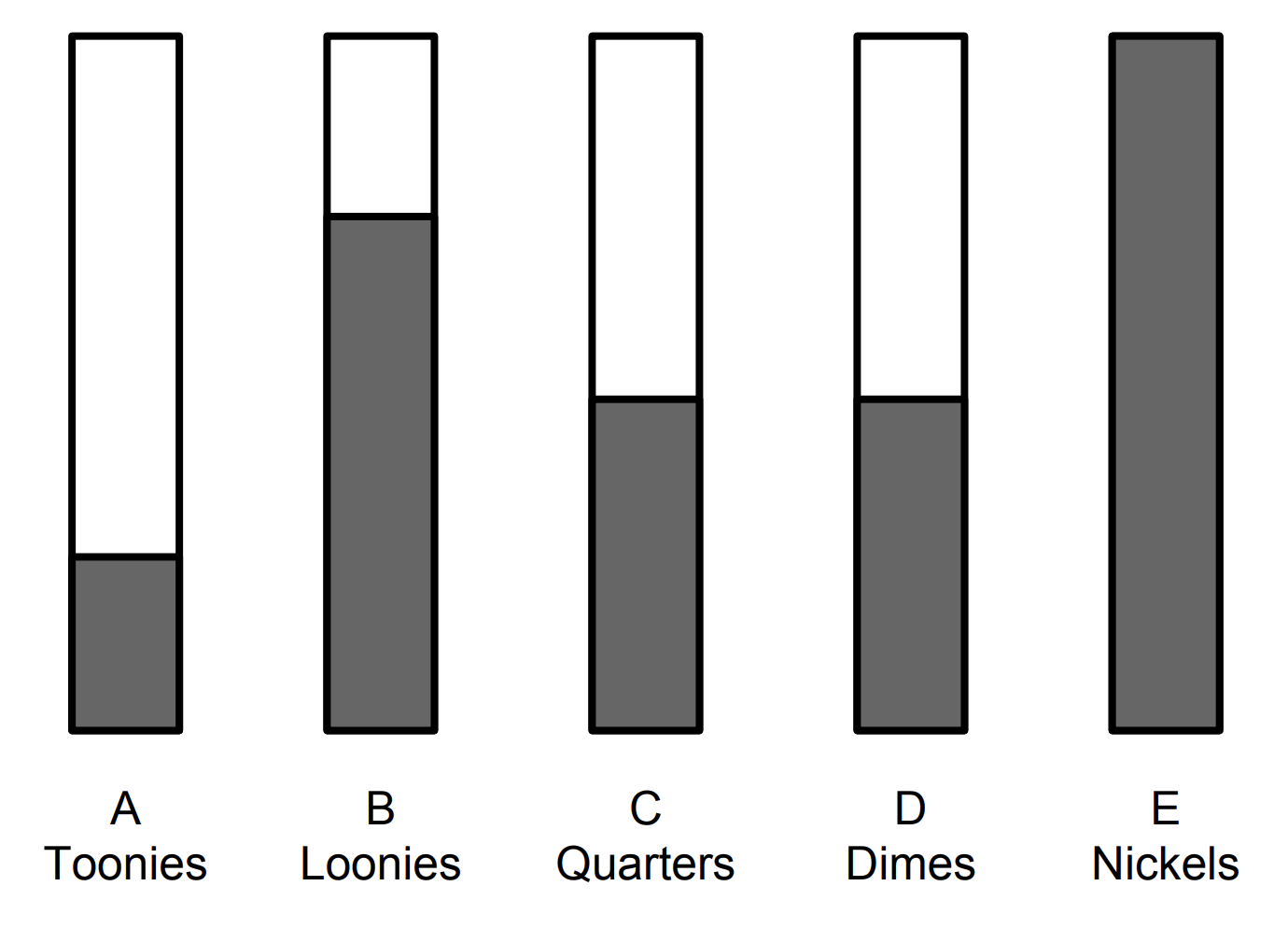Problem Solving Prompts
Learning Goals:
- Read and represent money amounts
- Solve problems involving the multiplication of multi-digit whole numbers
- Communicate mathematical thinking orally and visually
The Challenge:
James saves all of the coins he can find. He is very organized, so keeps his collection in separate containers for each type of coin.
Each container James has fits 80 coins total. Here is a picture representing the containers. The shaded part represents how many coins are in each container:

Which container currently holds the most money? How do you know?
Approximately what is the total amount of money James has saved so far?
Questions and Prompts to Support your Child:
- Were there any containers that you eliminated from having the most without needing to calculate? How did you know?
- What fractions or percentages do you see represented by the coin containers?
- What was your strategy for finding the total amount of money in all of the containers combined?
Extensions & Adaptations:
- If struggling with calculations, have a calculator handy!
- Approximately what is the difference between the amount James has saved in quarters and the amount he has saved in dimes?
- How would this situation change if the containers could hold 200 coins each instead of 80? What impact would this have on which container has the most money? What impact would it have on James’ total savings?
Source: University of Waterloo – CEMC Problem of the Week Database
Categories: Elementary

